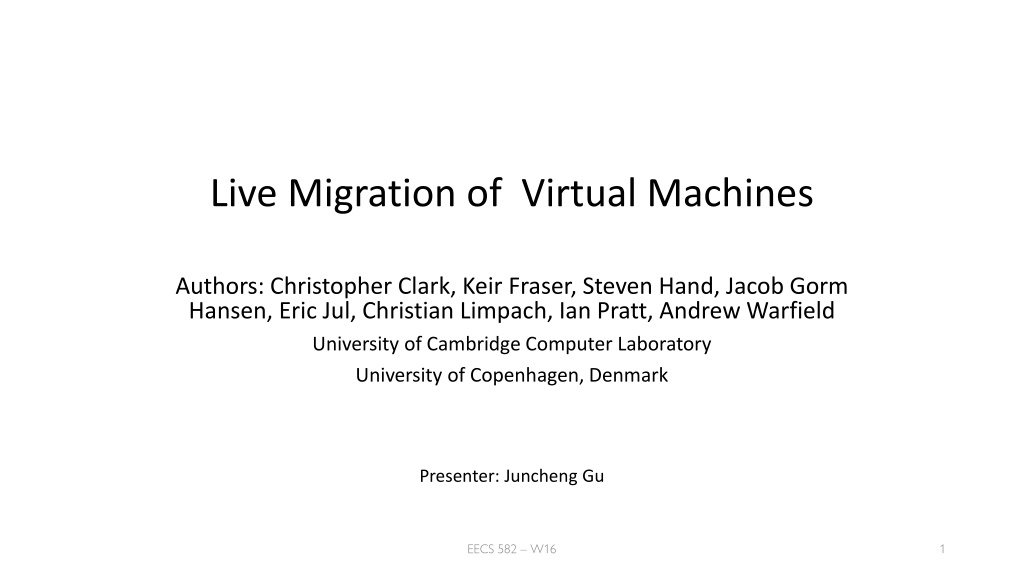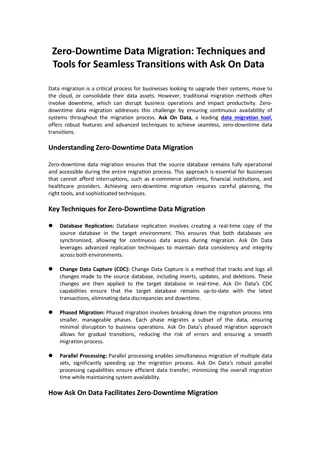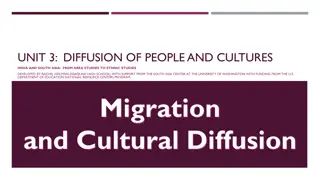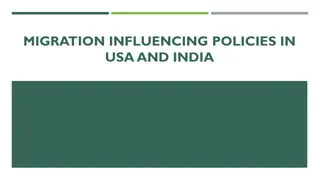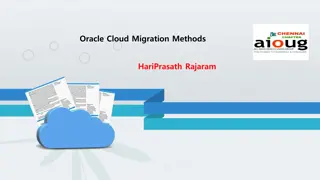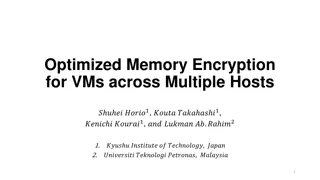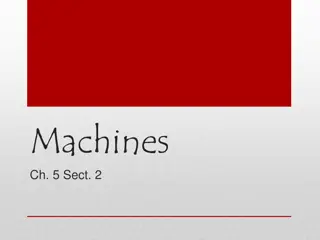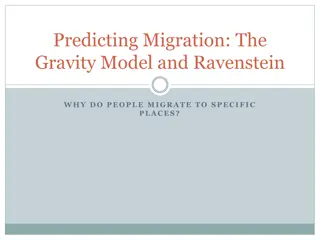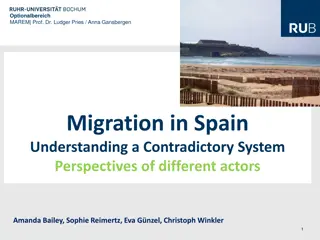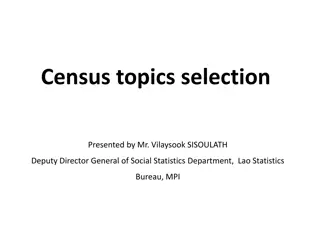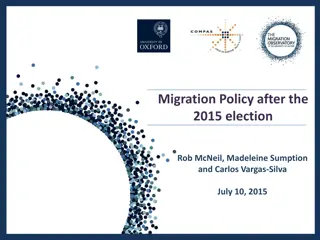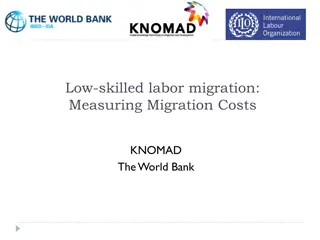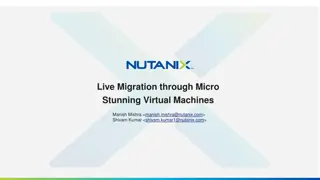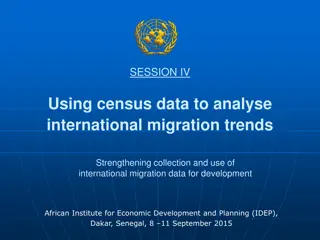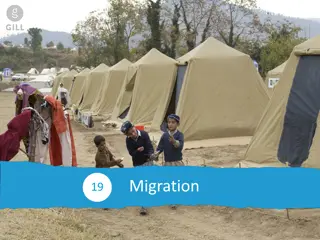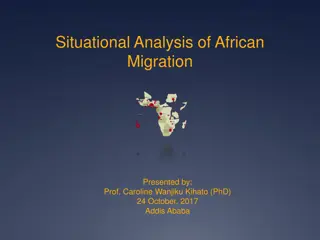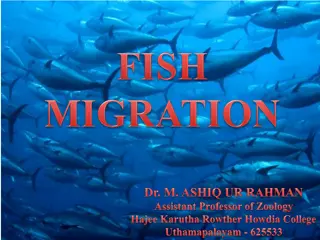Live Migration of Virtual Machines - Overview and Challenges
The paper discusses the concept of live migration of virtual machines, its motivations, benefits, and challenges in implementation. It covers the reasons for choosing OS-level migration over process-level migration, related works in the field, design challenges, and strategies for minimizing service downtime and migration duration. The authors delve into memory migration options and emphasize the importance of maintaining service quality during the migration process.
Download Presentation

Please find below an Image/Link to download the presentation.
The content on the website is provided AS IS for your information and personal use only. It may not be sold, licensed, or shared on other websites without obtaining consent from the author.If you encounter any issues during the download, it is possible that the publisher has removed the file from their server.
You are allowed to download the files provided on this website for personal or commercial use, subject to the condition that they are used lawfully. All files are the property of their respective owners.
The content on the website is provided AS IS for your information and personal use only. It may not be sold, licensed, or shared on other websites without obtaining consent from the author.
E N D
Presentation Transcript
Live Migration of Virtual Machines Authors: Christopher Clark, Keir Fraser, Steven Hand, Jacob Gorm Hansen, Eric Jul, Christian Limpach, Ian Pratt, Andrew Warfield University of Cambridge Computer Laboratory University of Copenhagen, Denmark Presenter: Juncheng Gu EECS 582 W16 1
Outline Motivation Design Implementation Evaluation Conclusion Future Work EECS 582 W16 2
Motivation What s VM live migration? Move VM instances across distinct physical hosts with little or no downtime for running services. Services are unaware of the migration. Maintain network connections of the guest OS. VM is treaded as a black box. EECS 582 W16 3
Motivation VM live migration can be a extremely powerful tool for cluster administrators. Hardware / Software maintenance / upgrades Load balancing / resource management Distributed power management EECS 582 W16 4
Motivation Why OS-level migration, instead of process-level? Avoid residual dependencies Original host can be power-off / sleep once migration completed. Can transfer in-memory state in a consistent and efficient fashion E.g. No reconnection for media streaming application Allow a separation of concerns between the users and operator of a cluster Users can fully control of the software and services within their VM. Operators don t care about what s occurring within the VM. EECS 582 W16 5
Motivation Related Work Approach Feature Collective project stop-and-copy Zap stop-and-copy VMotion similar with live migration Process migration residual dependencies EECS 582 W16 6
Design-challenges Minimize service downtime Minimize migration duration Avoid disrupting running service Source Host Destination Host .BI N V ML D .VS .X .VH Storage EECS 582 W16 7
Design-memory migration Options Phase service downtime migration duration push - - stop-and-copy longest shortest pull (demand) shortest longest Pre-copy a bounded iterative push phase + a very short stop-and-copy phase Careful to avoid service degradation EECS 582 W16 8
Design-local resources Open network connections Migrating VM can keep IP and MAC address. Broadcasts ARP new routing information Some routers might ignore to prevent spoofing A guest OS aware of migration can avoid this problem Local storage Network Attached Storage EECS 582 W16 9
Design-local resources Virtual Machine Virtual Machine Source Destination EECS 582 W16 10
Design-overview EECS 582 W16 11
Implementation-writable working sets Significant overhead: transferring memory pages that are subsequently modified. Good candidates for push phase Pages are seldom or never modified. Writeable working set (WWS) Pages are written often, and should best be transferred via stop-and-copy WWS behavior WWS varies significantly between the different sub-benchmarks Migration results depend on the workload and the precise moment when migration begins EECS 582 W16 12
Implementation-managed & self migration Managed migration Performed by a migration daemon running in the management VM Self migration Within the migratee OS, and a small stub required on the destination host Difference Managed Self Track WWS shadow page table + bitmap bitmap + a spare bit in PTE suspend OS to obtain a consistent checkpoint two-stage stop-and-copy, ignore page updates in last transfer Stop-and-copy EECS 582 W16 13
Implementation-track WWS (managed) Using shadow page table to track dirty pages in each push round 1. Xen inserts shadow pages under the guest OS, populated using guest OS's page tables. 2. The shadow pages are marked read-only. 3. If OS tries to write to a page, the resulting page fault is trapped by Xen. 4. Xen checks the OS's original page table and forwards the appropriate write permission. 5. At the same time, Xen marks the page as dirty in bitmap. At the beginning of next push round Last round s bitmap is copied to the control software, Xen s bitmap is cleared. Shadow page tables are destroyed and recreated, all write permissions are lost EECS 582 W16 14
Implementation-dynamic rate limiting More network bandwidth, less service downtime ! performance downtime Less network bandwidth, less impact on running service ! Dynamically adapt the bandwidth limit during each round - Set a minimum and a maximum bandwidth limit, begin with the minimum limit - ???????? ????= dirty ????current+ ???????? ????????? - ????? ???????????= ???????? ????? ????? When terminate push, and switch to stop-and-copy ? - ????? ????current> ???????? ??? - ????? ????? < ? ??? ??? EECS 582 W16 15
Implementation-paravirtualized optimizations Stunning rouge processes Rouge process: generate dirty page at a very high rate (write one word in every page) Forking a monitor process: monitor the WWS of individual processes If a process exceeds write fault limitation, then move it to wait queue Freeing page cache pages Typically, OS have a number of free pages Using ballooning mechanism to return free pages to VMM EECS 582 W16 16
Evaluation-simple web server Migration starts A highly loaded server with relative small WWS Controlled impact on live services Short downtime EECS 582 W16 17
Evaluation-rapid page dirtying Stop-and-copy In the third round, the transfer rate is scaled up to 500Mbit/s (max) Switch to stop-and-copy, resulting in 3.5s downtime Diabolical workload may suffer considerable service downtime EECS 582 W16 18
Conclusion OS-level live migration Pre-copy: iterative push and short stop-and-copy Dynamically adapting network-bandwidth - Balance service downtime and service performance degradation Paravirtualized optimizations Minimize service downtime and impact on running service EECS 582 W16 19
Future Work Cluster management - Make decisions for the placement and movement of virtual machines Wide Area Network Redirection - OS will have to obtain a new IP address, or some kind of indirection layer Storage Migration - Local disks are considerably larger than volatile memory EECS 582 W16 20
Q&A Thank You! EECS 582 W16 21
